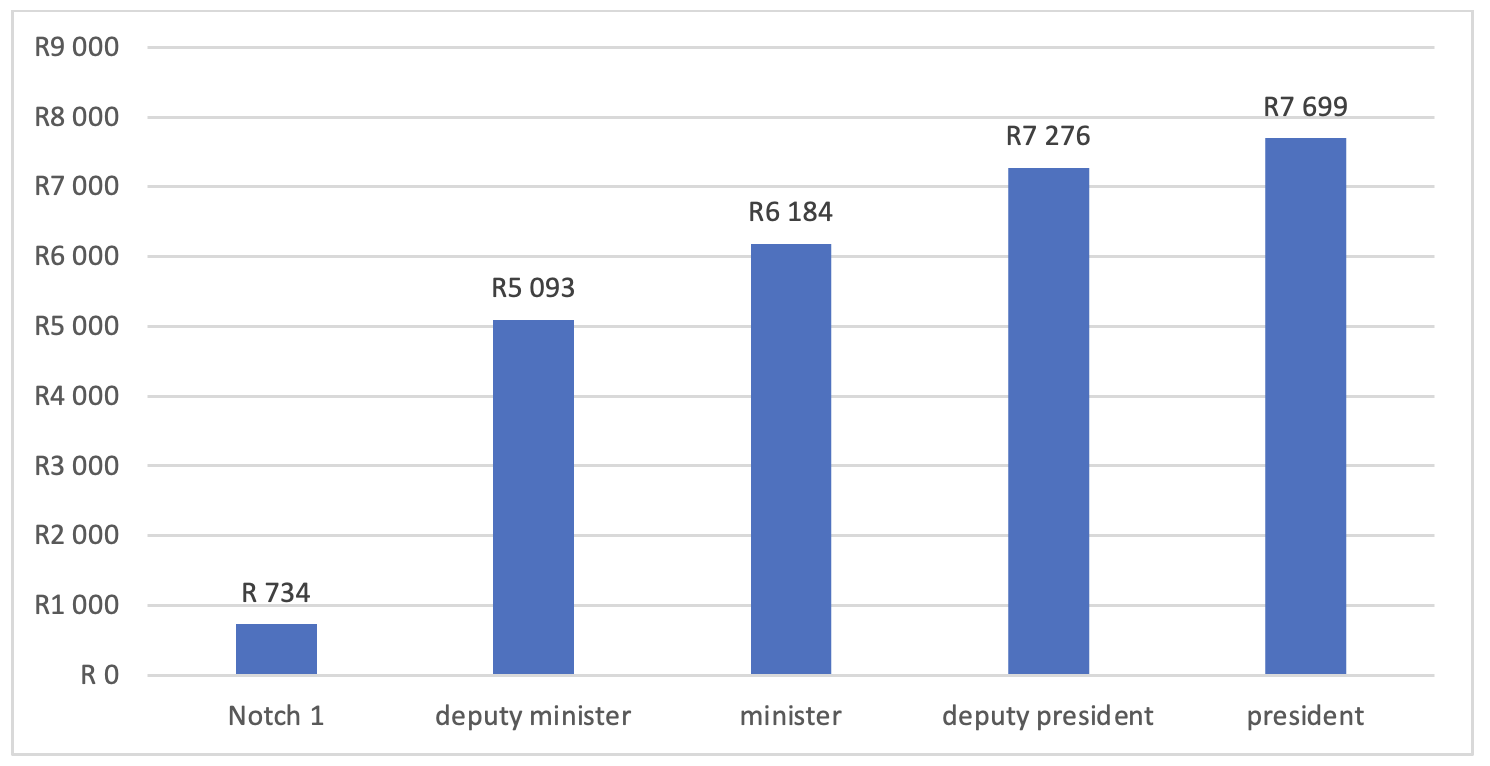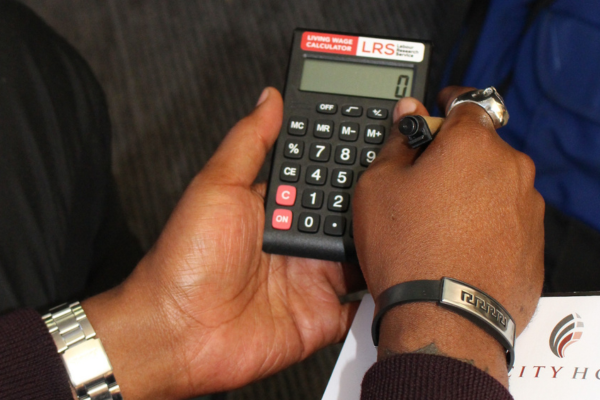Outraged trade unions say the huge salaries and benefits for public office bearers widen existing income inequalities in the public service. The President this month signed off on a 3% pay rise for all public office bearers. According to COSATU: “The lowly public servants such as police officers, nurses and teachers will have to work for nine years before they earn the annual salary of a director-general of the judiciary.”
The 3% increase for office bearers is below average inflation, but what does it mean in Rand terms compared to the 7.5% increase for ordinary workers in the public service?
Public office bearers will be earning more than R4000 a month as a result of the 3% increase. In comparison, the lowest paid public service employee received a 7.5% increase, which equates to just R734 per month. For many people, the R734 wage increase does not cover transport costs. For example, a worker from Soshanguve, north of Tshwane, spends R60 a day on return taxi fares and R1200 a month. This worker needs R466 a month to make R1200 for transport. So the wage increase does not even cover food and other basic needs for the workers.
Table 1: Level 1 Notch 1 and Public Officer Bearer Salary, Yearly Wage Increase and Monthly Wage Increase

Source: gpwonline.co.za
The tyranny of percentages and what union negotiators can do about it
Percentages are useful insofar as they allow changes in different measures to be reduced to a common denominator and make them easier to compare. What can trade union negotiators do if they want to know what a percentage increase means for workers at different income levels and want to make comparisons with increases for public office bearers? One approach would be to have the Department of Public Service and Administration set the actual salary level and notch.
Building the wage argument
To build an argument or case, union negotiators should consider the following:
- What does the percentage offer mean in terms of Rand value?
- What is the pay gap between the lowest and highest paid public servants (including office bearers)?
- What is the wage gap between the grade 1 notch 1 and the office bearer?
An effective negotiator knows the actual wages paid to members in the bargaining unit before starting to negotiate. The union’s wage demand will be based on the minimum wage for the lowest grade or the minimum wage for the entry level in the bargaining unit.
Statistics South Africa divides monthly household expenditure into 10 deciles. The table below shows that expenditure in decile 10 was higher than expenditure in decile 1, indicating a high level of inequality.

Source: Statistics South Africa
There is more than one inflation figure. Different groups, from the very poor to the very rich, can experience different rates of inflation because they buy different things. For example, the very low spending group (decile 1) experienced an inflation rate of 9.9%, which was higher than the headline annualised inflation rate of 6.3%, while the very high spending group (decile 10) had an inflation rate of 5.9%, which was lower than the 6.3% inflation rate in May 2023.
The graph below shows the gap between what an ordinary worker received and what a public official received. The gap is very large when you consider that we are not equal in terms of the rate of inflation. Low-paid workers are most affected by price increases when inflation rises.
Table 1 Level 1 Notch 1 and Public Officer Bearer Salary, Monthly Wage Increase








